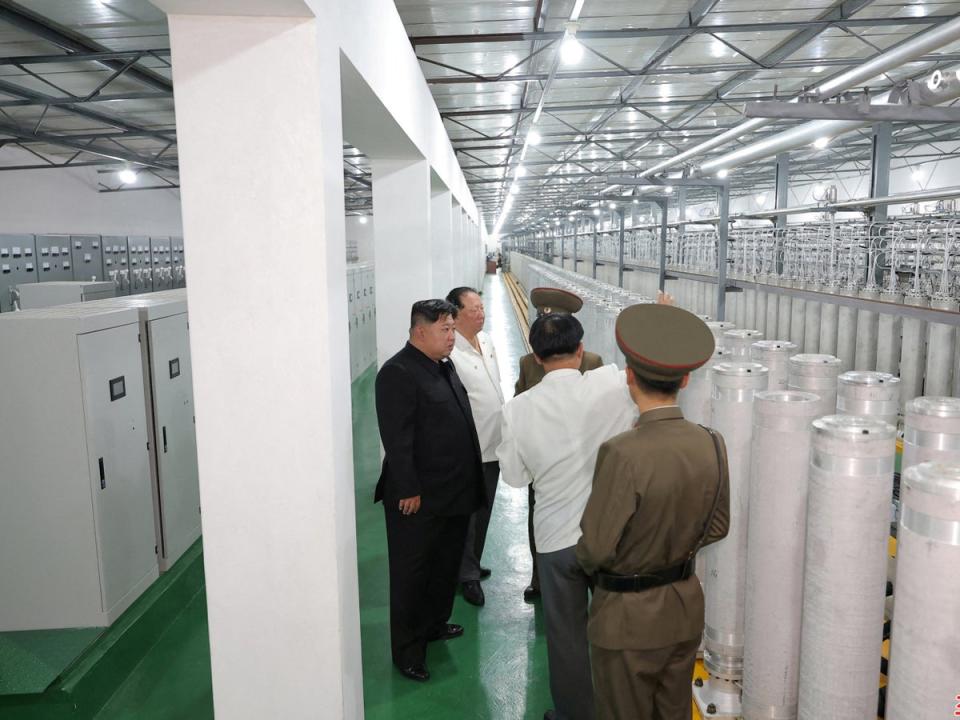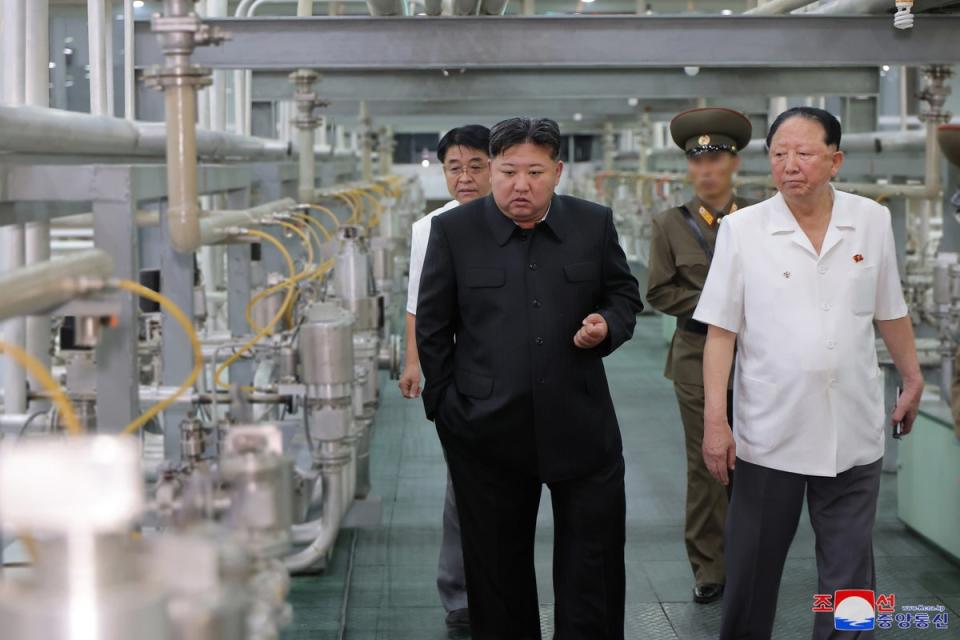North Korea appears to have inadvertently given away the location of its secret site for building nuclear bombs, after releasing pictures of Kim Jong-un taking a tour of a uranium enrichment facility.
The images, posted online by a state-run news agency, offer an extremely rare glimpse into the isolated nation’s nuclear weapon development programme that has kept neighbouring South Korea and Japan, as well as their allies, on edge.
The photos show Mr Kim visiting a bright, sterile facility, walking between long rows of cylindrical machinery which is used to produce weapons-grade nuclear material for what the North describes as its growing arsenal.
A report accompanying the photos on the Korean Central News Agency (KCNA) website did not reveal the facility’s location.
But analysis by North Korea observers and experts has revealed that the pictures were taken at the Kangson uranium enrichment plant just outside of Pyongyang.
The site in Chollima-guyok, southeast of the capital, has long garnered international attention and is thought to have been operational since the early 2000s.

Jeffrey Lewis, a non-proliferation expert at the Middlebury Institute of International Studies, said five images showing the inside of facility, including of the “big” hall and an annex, match features of satellite imagery of the nuclear site.
“That’s likely Kangson. It is an enrichment plant,” Mr Lewis said, adding that the annex’s odd shape and its unusual set of columns and beams are a “strong match” to the new buildings at the site that North Korea constructed this year.
North Korea is believed to have several such sites for enriching uranium.
Commercial satellite imagery from recent years has revealed construction activity at both the main Yongbyon Nuclear Scientific Research Centre and the Kangson site, indicating potential expansion at both locations, according to experts who analysed the satellite images.
In June, Rafael Grossi, director general of the International Atomic Energy Agency, reported that a new annex was being constructed at the main building of the Kangson complex. He also noted that the complex shared “infrastructure characteristics with the reported centrifuge enrichment facility at Yongbyon.”


It comes as the North Korean dictator said the country would exponentially increase its stockpile of nuclear weapons in a surprise speech on the 76th anniversary of the founding of North Korea. Mr Kim said there would be no limit on the expansion of the country’s military prowess.
South Korea’s new National Security Adviser (NSA) Shin Won-sik warned in July that Pyongyang could be considering conducting a nuclear test close to the US presidential election in November.
KCNA reported that during his tour of the facility, Mr Kim expressed great satisfaction over the technical capabilities of North Korea’s nuclear sector and stressed the “need to further augment the number of centrifuges in order to exponentially increase the nuclear weapons”.
Colin Zwirko, a senior analytical correspondent with NK Pro, a Seoul-based website that monitors North Korea, said the photos and satellite imagery indicate the complex being visited was Kangson.
The photos show an advanced design of around 1,000 centrifuges and the hall with cascades connecting the centrifuges, suggesting that North Korea has made progress in its uranium enrichment programme, according to the experts.
“The size of the cascades and hall shown also signify substantial capacity, perhaps not to the level of ‘exponential growth’ as Kim has mandated, but significant growth, nonetheless,” said 38 North, a Washington-based North Korea monitoring programme.
It said that it was possible that these centrifuges are “North Korean designed and manufactured; however, they likely use at least some imported materials despite decades of increasingly harsh sanctions”.
Some experts have drawn a link between the timing of KCNA’s release of the images and the upcoming US election, suggesting that North Korea wants to influence American voters and send a message to the next administration that denuclearisation is no longer possible.
Additional reporting by agencies
